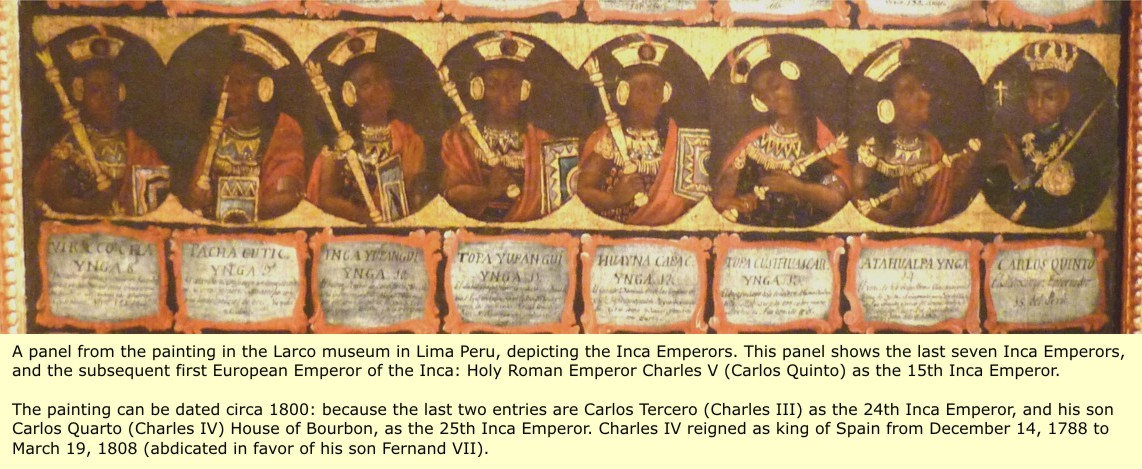
 |
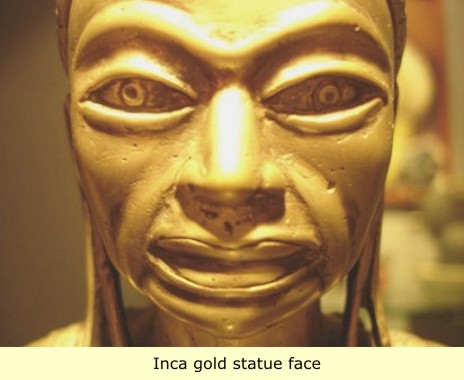 |
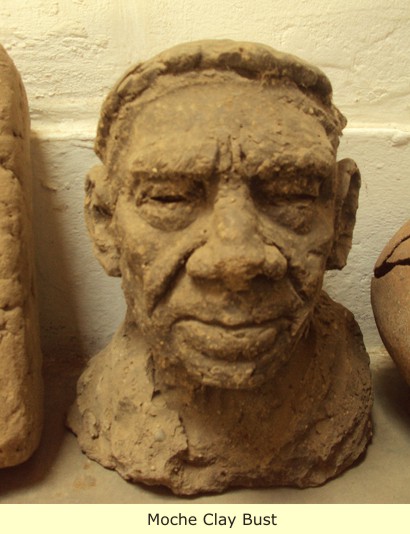 |
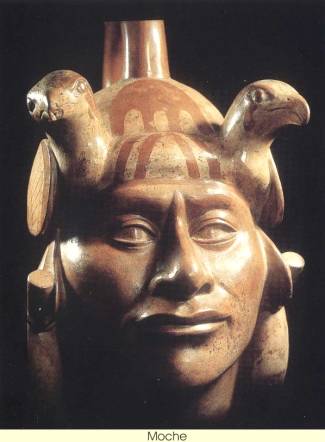 |
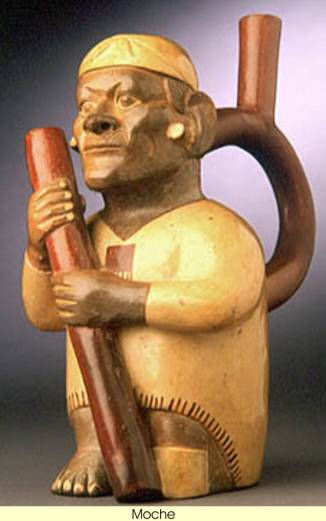 |
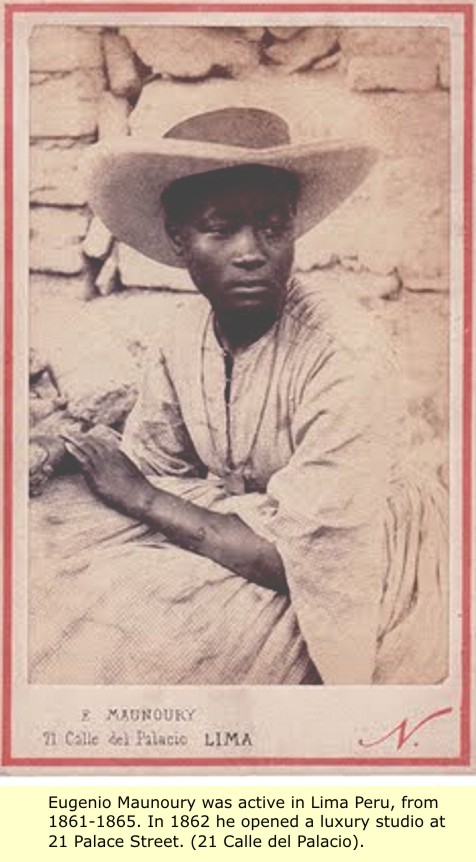 |
 |
 |
 |
 |
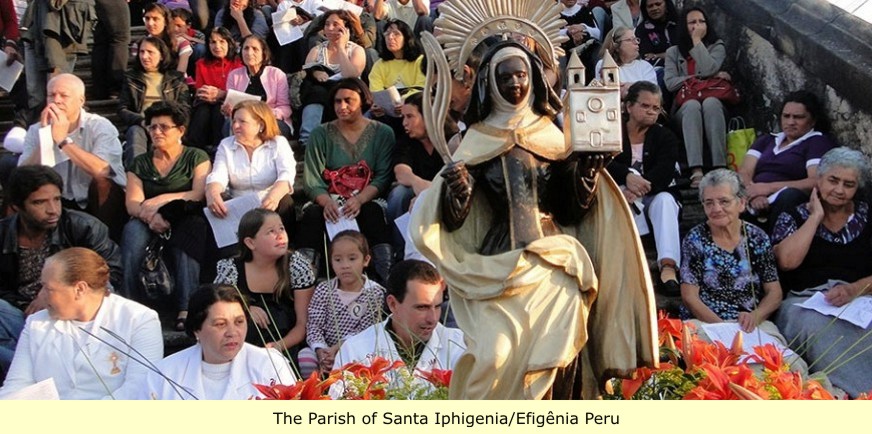 |
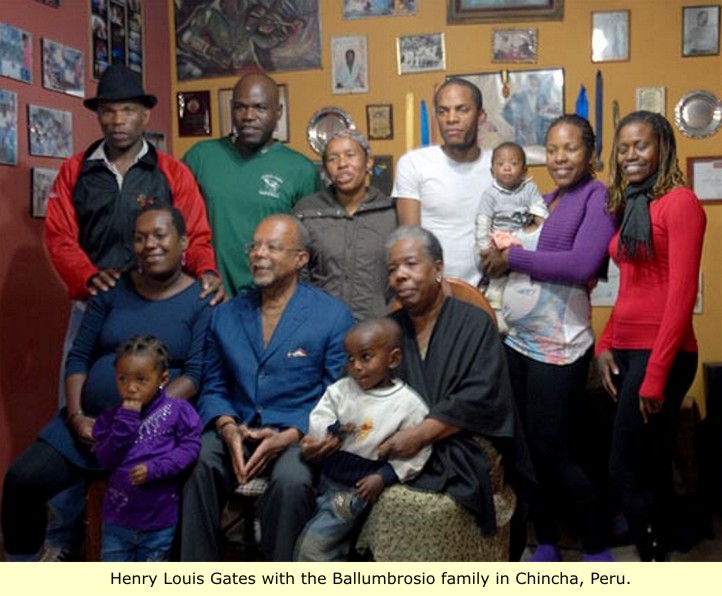 |
 |
 |
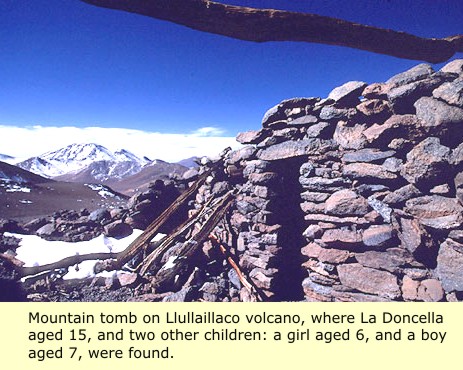 |
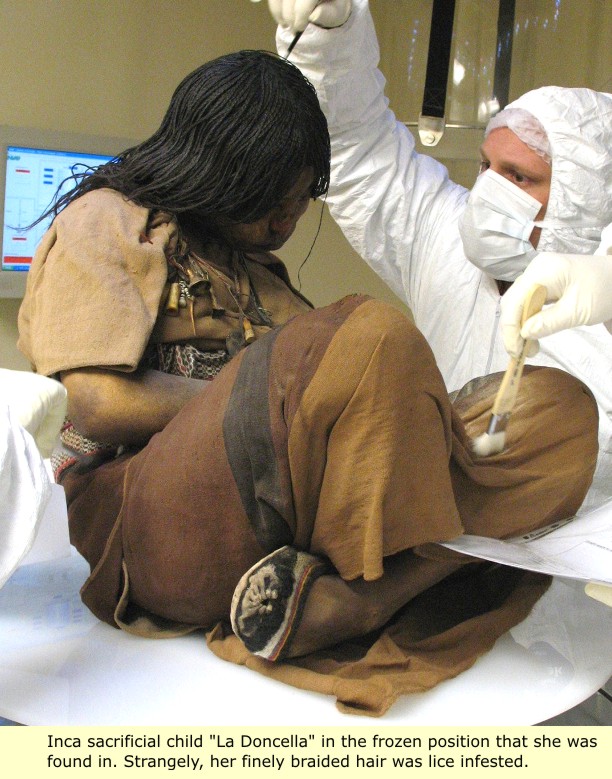 |
In 1569 Francisco de Toledo was dispatched from Spain by King Phillip II to assume the position of Viceroy of Spanish Peru. Toledo was expected to install political reforms that would further subordinate the natives especially in the Andes, provide adequate workers for the mines, and increase the overall revenue for the royal treasury. Although Toledo legislated several reforms his three most influential were:
1) congregating the indigenous peoples into large strategic towns {reducciones}.
2) Imposing a regularized system of taxation.
3) establishing a regimen of forced labor to support the silver mines of Peru and Alto Peru {Bolivia}. The reforms were readily accepted by the local officials, but not because they wished to improve the status of the Spanish crown; rather it gave them a chance to further corrupt and reap the benefits.
Prior to the reforms of Francisco de Toledo, political and economic corruption was already in motion. After Toledo's reforms were instituted, royal officials, clergy, entrepreneurs and even kurakas (Local native chieftains) did what they could to take advantage of the system and profit. Toledo's reforms permitted a larger share of Spaniards to exploit the Indios (Indigenous peoples) productivity, increase their revenues and appease the crown. To some degree, both indirectly and directly, the reforms encouraged the Indios to assimilate, adapt, change or hide in order to escape the obligations of the Indio caste system.
Ayllu -
A clan/network of families, that constituted the basic socioeconomic unit, and local government, of Inca society.
Mita -
Mita was mandatory public service in the society of the Inca Empire. Mita was effectively a form of tribute to the Inca government in the form of labor, public service was required in community-driven projects such as the building of their extensive road network and Military service. All citizens who could perform labor were required to do so for a set number of days out of a year. Overseers were responsible to make sure that a person after fulfilling his duty in the Mita still had enough time to care for his own land and family.
Forasteros (Native - Strangers/Outsiders/presumably non-Incas)
Yanaconas -
In the Inca Empire yanacona was the name of the servants to the Inca elites. It is important to note that they were not forced to work as slaves. Some were born into the category of yanacona (like many other professions, it was a hereditary one). They were to care for the herds of the nobles, do fishing, and were dedicated to other work, like the making of pottery, construction, and domestic service. Yanaconas were sometimes given high positions in the Inca government.
When the Spanish conquistadors arrived in modern-day Peru, the yanaconas declared themselves “friends of the Spaniards”, as most peasant societies are very sensitive to changes in power balances. They then assisted the Spaniards to take control of the empire. After conquest, the yanacona population exploded with people leaving ayllus in correspondence with mining. Spaniards favored the individual yanaconas (as they were an alternative labor force) instead of the ayllu-based encomienda system, so the population continued to increase.
Mitimaes - Is a term commonly associated with yanaconas, but its meaning is different, as the mitimaes were used as labor for large projects. Yanaconas were specifically not a part of an ayllu and were relocated individually instead of in large labor groups. An example of the differences of the classes is that mitimaes were labor that built Machu Piccu, but yanaconas lived and served the Inca there.
Potosi - Is a city in Bolivia; it is one of the highest cities in the world by elevation at a nominal 13,420 ft. and it was the location of the Spanish colonial mint. Potosí lies at the foot of the Cerro de Potosí, sometimes referred to as the Cerro Rico ("rich mountain"). A mountain popularly conceived of as being "made of" silver ore, which has always dominated the city. The Cerro Rico is the reason for Potosí's historical importance, since it was the major supply of silver for Spain.
Two things to consider about the local officials were their capability to perform and their integrity. A.M. Fuentes writes about the inefficiency of tribute collection of the yanaconas by the corregidores (Spanish Mayors) at the Potosi.
He writes, "In the secular government I referred to your majesty about the sustenance and origin of these people, the very moderate tax they pay in some regions, how the corregidores and Royal Officals collect it, the value of yanacona tribute at Potosi, and the silver which is consigned to the foot soldiers of government. The rest is of the Royal Treasury but of little importance owing to the poor collection, which you should rectify."
Toledo's reforms for collecting tribute clarified that tributarios (Indios who held and cultivated native property/land) from the ages of 18 to 50 were to be subjected to the tribute system. "In rural society, Toledo's reorganization created imposing networks of authority, formal and informal, in which the corregidores stood at the center, armed with the police powers of the colonial state with that authority and protection corregidores began to take advantage of the system. The police powers were real enough, for corregidores and other officials jailed and whipped people, and impounded their belonging, under the guise of enforcing laws and punishing criminals. The corregidores also withheld tribute monies belonging to the crown in order to finance their own local business ventures.
In addition to intimidating royal opposition and embezzling tribute, the corregidores also took advantage of the indios' service. Spanish officials also required Andeans to serve as mitayos (conscripted laborers) in textile mills, on coca farms, and on public works projects, despite imperial and local laws forbidding the practices. When kurakas attempted to protest or take the local magistrates to court, the corregidores and their allies among the parish priest usually conspired to intimidate, abuse, jail, or even replace the ethnic leader with a more pliable candidate."
The lure of riches, though, did not solely attract Spaniards, but also kurakas. There is not sufficient evidence that all kurakas took advantage of the Toledan system, however; Andrien offers one specific example that permits historians to identify the vast amount of wealth that a kuraka could acquire.
He writes, "The fabulously wealthy and powerful Diego Caqui, kuraka of Tacna ... When Diego Caqui died in 1588, his will specified that the kuraka owned an estate worth 260,000 pesos, including a coastal vineyard with forty thousand plants and three ships engaged in coastal trading. The example offered by Andrien demonstrates the potential for kurakas to take advantage of Toledo's reforms. Andrien does go to clarify that Diego Caqui used his wealth to promote festivals and distribute gifts among the indios, however; that cannot be said of all the kurakas that took advantage of Toledo's reforms and of their kinsmen.
Robert H. Jackson writes, "In the colonial period the government created and managed corporate indigenous communities that functioned as a type of reservation to separate the indigenous from the nonindigenous populations. The reservations that Jackson alludes to were the reducciones or small Spanish like town settlements. Prior to the establishment of reducciones Zulawski notes, "[the indios] were relatively inaccessible for the Spaniard's purposes: evangelization, collecting tribute, and mobilizing labor. By placing the indios into reducciones the Spaniards increased their control and authority over them.
The concentration of the population facilitated both evangelization and the collection of tribute. Klaren confirms, "The purpose of such a massive, forced resettlement was to establish direct state control and facilitate the Church's Christianization of the native population, while enhancing the collection of the tribute tax and the allocation of labor. In addition, to the overall purpose of the reducciones as indicated by Tandeter and Klaren, Ann M. Wightman described that, "Indians would be relocated in proximity to the mining zones, particularly Potosi and Guancavelica, and in the agricultural valleys of the sierra. Thus, the reducciones were not just a method used to tax, manage and exploit indios productivity; it was a method of geographical location to ensure that the local and royal officials could use the indios to the maximum advantage. This method is preciously what the reforms permitted and in so doing equipped, mainly local officials, with the opportunity to increase their wealth.
Once the indios had been relocated from their native hilltop dwellings to valley reservations they were put to work and taxed. The type of work the indios were forced to do varied to some extent, but if it was not working in the mines, it was agricultural or domestic work. The produce of the work would in turn be taken by Spanish officials as payment for the tribute. Often after paying the tribute indios were left with very little and in some cases they could not work enough to pay the tribute. Establishing the tribute and the mita was a devious plan by the Spaniards, who tried to understand Inca history and use it for their advantage.
John v. Murra notes a 1559 meeting, in which settlers were asked to discover the history of the indios. Murra records the instructions of a royal official to several members of his staff, "you will inquire if in olden times there were corporal services and in what form so that if these had prevailed, one would understand in all fairness what they could and should pay.
Historians Jeffrey Cole and Enrique Tandeter testify to corrupt local officials. Cole says, "Many of the Indians who came to Potosi were yanaconas - artisans, former Inca retainers, and others who were not affiliated with an ayllu - men who had been displaced by the conquest. Tandeter adds, "Even more surprising is the fact that more than half of the forasteros of Oruro were not exempt from the mita either. Perhaps surprising, nonetheless it was common practice, especially if the Spaniards wished to maintain and increase mining productivity.
In theory, mitayos were to work for one year then be paid and return home not having to serve again for about another seven years. Zulawski notes, "Each worker was to remain for a year in Potosi and be paid for his labor. After his turn in the villa imperial, he could return to his village and theoretically was not to serve again for about seven years. Unfortunately, the decline of originarios and mass migration away from the mita regions caused the seven years away from the mita to become three years. Tandeter comments, "Viceroy Toledo had determined that each village would send to Potosi each year a fixed number of Indian men between the ages of eighteen and fifty, selected from a list of villages located in sixteen provinces centered in the Altiplano (also known as Andean Plateau) , but reaching to the east and north, to the dividing line between Collao and Cusco.
However, the bulk of the pressure fell upon the kurakas and the poor mitayos. The Kurakas were in charge of supplying the local officials with a yearly quota of mitayos and if they were unable to accomplish this task then they and their family would lose their social status, be imprisoned and in some cases sent fo the mines. Wightman further captures the intense amount of pressure bestowed upon a kuraka, "As a parish priest explained in 1689, 'there is no Indian who wants to be kuraka, because of the problems to be faced in the fulfillment of the different obligations; and the corregidores and their assistants force the richest Indian to take this office, to serve as kuraka of these ayllus, even though he may not be an originario of the town."
Wightman states, "The Toledo reforms, however, were particularly vulnerable to manipulation because the per-capita basis for tribute and mita assessments led Indian leaders to underreport their base population. However falsifying census records was extremely risky for kurakas because if caught they'd be demoted, forced to pay a tribute and handed over to public works. In addition, for indios that were not properly recorded in the census, their houses would be demolished, they would be taken out by force, fined and handed over to public works.
Cole records a description of the mines by Father Jose de Acosta, an observer of a Spanish mita in 1590s: They labor in these mines in perpetual darkness, not knowing day from night. And since the sun never penetrates to these places, they are not only always dark but very cold, and the air is very thick and alien to the nature of men; so that those who enter for the first time set as sick as at sea - which happened to me in one of these mines, where I felt a pain at the heart and a churning in the stomach. They [apiris] always carry candles to light their way, and they divide their labor in such a way that some work by day the rest by night, and others work by night and rest by day. The ore is generally hard as flint, and they break it up with iron bars. They carry the ore on their backs up ladders made of three cords of twisted rawhide joined by pieces of wood that serve as rungs, so that one man may climb up and another down at the same time. These ladders are twenty meters long, and at the top and bottom of each is a wooden platform where the men may rest, because there are so many ladders to climb. Each man usually carries on his back a load of twenty-five kilograms of silver ore tied in a cloth, knapsack fashion; thus they ascend, three at a time. The one who goes first carries a candle tied to his thumb, ... thus, holding on with both hands, they climb that great distance, often more than 300 meters - a fearful thing, the mere thought of which inspires dread.
For the few indios that did survive their turn at the mita, when they return to their homeland, often they found that their land had been occupied by another party. Wightman explains, "Indians who did return to their home communities often found that their lands had been seized by Spaniards, taken by neighbors, or occupied by migrants from other communities. This unfortunate turn of events is not surprising in that the percentage of survivors was fewer than 15%. It is likely that the Spaniards or neighboring indios did not expect. The return of the majority mitayos.
When Toledo inaugurated his reforms he specified who had to serve at the mita, who was exempt, who paid higher tributes and who was taxed less. To accomplish this he created a caste system within the indios. There were these groups, the originarios also commonly referred to as tributarios, the yanaconas and the fosasteros. Those identified as originarios were permitted to maintain the land of their native settlement within the zone of reducciones. They had to pay the highest tribute and provide workforce for the mita. Yanaconas, were usually Spanish servants who gave up their native settlements and migrated to another settlement within that given region. Jackson states, "The Spanish classified another group as yanaconas, tributaries who had no link to a community and served Spaniards in different capacities, generally in a servile status. They forfeited their rights to land from their native settlement. They did pay a lower tribute and were for a time exempt from the mita. Later on The yanaconas would take on two distinctions yanaconas del rey and yanaconas de espafioles.
Yanaconas de espafioles could provide proof of employment with Spaniards, thus, acknowledging their right to be exempt from the mita; Unfortunately for yanaconas del rey exemption was not extended to them in that they practiced to a degree personal autonomy by not working directly for a Spaniard even though they were still subjected to the tribute. Wightman writes, "All other yanaconas [yanaconas del rey] were taxed, subjected to mita duty, and resettled into standard reducciones, with those in colonial cities assigned to urban parishes. To simply migrate away from their native land did not exempt indios from the mita, they had to offer their services to the Spaniards and take up employment. Finally, the forasteros (Strangers), which Jackson explains, "Large numbers of community members from the altiplano migrated to Cochabamba in the late sixteenth and seventeenth centuries, and the colonial government classified the migrants as forateros who did not enjoy rights to community lands but still had to pay tribute.
Toledo's reforms clarified who was exempt and who wasn't, but he was unable to supervise local officials, so he was helpless to fully supervise his reforms. Most Indians didn't want to participate in the mita. So great was their distaste for the mita that they desired by whatever means to escape the mita service. Cole comments, "Rather, the Indians responded to the worsening situation in the mines by using every available means to evade the mita. However, were a huge mass of the work force to change their civil status, then the local officials would suffer. To avoid such cases the local officials simply ignored Toledo's specifications.
Tandeter states, "In the area subject to the mita, the census showed a pronounced population decline of 45 percent since the Toledo inspection. On the following graph Cook demonstrates the total number of tributaries and mitayos in several regions encircled around the mitas.
"Many of the Indians who came to Potosi were yanaconas - artisans, former Inca retainers, and others who were not affiliated with an ayllu - men who had been displaced by the conquest. Tandeter adds, "Even more surprising is the fact that more than half of the forasteros of Oruro were not exempt from the mita either.
In addition to the mita, indios were required to pay a tribute to the royal crown and local officials. Each civil status group within the indios caste system had to pay tribute with the exception of the kurakas. Andrien states, "Kurakas were exempt, but members of the community clan structure (tributarios) paid the largest sums. Those outside the ayllu or kin structure (yanaconas) and recent migrants (forasteros) paid lesser amounts. After the collection of the tributes the kurakas would transfer the goods over to the corregidores who would then deposit the sum to various offices.
Geographically, the Incas inhabited hilltops where they worked family terraces. The forced migration in response to the reforms of Toledo took the Incas from their native habitat dwellings and relocated them to the altiplano valleys where the Spaniards put them to work in a more Europeanized setting. In the reducciones Toledo also authorized the legal passage of priest in orderto Christianized the natives. In a letter approved by Toledo he states the following:
... Don Francisco de Toledo (orders and commands) Fr. Santa Cruz and the principle Indian Don Alonso Chiri, chief of Catinte ... to enlighten and teach the evangelical doctrine of our blessed Catholic faith (to the Manaries Indians) catechizing them and baptizing them, giving them faith and obedience, which they owe to your Majesty King Philip, and to me, in his royal name, notifying them to organize and achieve this I prefer not to send Spaniards with arms to annoy and force them rather (I send) you, Father Santa Cruz, to teach and illuminiate them so they learn that which benefits them for the salvation of their souls and protects and defends them. Therefore I charge and order the principle chiefs and Indians of the Manaries (tribe) to receive, treat, and feed you well and give you whatever else you need. They should let you and the mentioned chief come and go freely, as well other chiefs and Indians who are subjects of Your majesty. With Spanish justice help to comply and give all the support possible to Fr. Santa Cruz to achieve my orders (and) collect enough in the region where he lives to teach christian doctrine while he travels through province of the Manaries with the chief ...
Toledo's statement clearly shows that one of the Spanish intentions for replacing the indios in reducciones was to Christianize them and teach them of the Catholic faith. Whether their intentions were genuine or not is debatable, but what is noticeable is the official approval to Christianize the indios and change their religious upbringings. One method of assimilating the indios into the Catholic faith was rewarding them with exemption from the mita. "The priest could bestow exemptions from the mita upon his favored lay assistants, and heap abuses upon the troublesome by accusing them of idolatry. Thus, the more assimilated an indio became, culturally, the less he/she was punished, taxed, or forced to work, technically.
Most of the cultural changes, though, geographical, economic, horticultural, and religious were examples of forced change. Indios who changed culturally were not guarantee better treatment, tax relief or mita exemption. As demonstrated earlier many forasteros and yanaconas were still being subjected to mita service even though they had changed their social economic status. That is why, as some historians have argued, the indios further changed socially in order to ascend beyond the indio caste system by establishing themselves as mestizo status.
In order to do this the indios aimed to change every social aspect from indio to Spanish. Jackson argues, "Individuals consciously changed their behavior to be able to move to another and usually higher racial status within the caste system. Indios, for example, could escape tribute obligations and service in labor drafts such as the Andean mita by passing as mestizos. Methods of change included clothes, language, surname, occupation, activities, architecture, religion, baptism, Catholic marriage, location of home and accumulation of wealth. Jackson continues, "Indios could change their mode of dress, learn to speak Spanish, move to a city or away from their place of birth, take up a profession generally not associated with the indigenous population, and be reclassified as mestizos exempt from the unique legal obligations of the indigenous population." However, once the outward appearance has changed in an attempt to climb the social ladder, there still remained the legal documentation of identification.
One method of escaping the indio caste by legal documentation was to simple state that you had some Spanish background and were, thus, mestizos. This was such the case for Antonio and Agustin carrillo who won exemption from the mita based on their claim to Spanish heritage in 1603. Many local officials advised against the judicial conclusion fearing an onslaught of social claims. Stern records, "The audiencia of La Plata ruled in favor of the Carrillos despite the objections of its fiscal, who counseled the tribunal that a ruling in favor of the brothers would open a Pandora's Box of problems for the mita, for the judicial system would soon be clogged with petitions from Indians claiming some degree of Spanish ancestry. Jackson concurs adding this excerpt, "The Indians change their name, and declare themselves mestizos and yanaconas, they dress in the Spanish way and work as artisans or in the convents with the intention of not complying with their obligations.
Claims of Spanish ancestry were usually accompanied with wills, marriage records, baptismal records or testimony from a known Spaniard. Jackson discusses baptisms by stating, "This was particularly the case with parish priests who recorded the racial status of newborn children. If the parents of a newborn child were members of the Catholic Church they could try to claim Spanish ancestry at the baptism or provide a generous bribe to the local priest so that their son or daughter could be classified as a mestizo. In some cases the priest would even baptize infant boys as girls so that they could escape the mita service.
Another method that didn't involve using the church was the testimony of a Spaniard, usually a hacienda owner. A hacienda owner who employed indios had to do one of two things when it came time to pay tribute; 1) pay the tribute for the indios or 2) permit the indios to leave for a certain duration of time so that they could earn enough money to pay the tribute. If, however, a indio suddenly changed identity to a mestizo then the hacienda owner would no longer have to burden himself with his/her tribute situation. Jackson notes, "Hacienda owners, for example, conspired to have their workers removed from the tribute rolls. In this way, the hacendados would not have to contend with paying their workers' tribute, or allow the workers time off to work elsewhere to earn money to cover the tribute payments.
The ability to use the Spanish system against the Spaniards and climb the social ladder was precisely what a number of indios attempted. Thus, indios who had been subjected to decades of Spanish colonial corruption and abuse could try and reinvent their heritage as a method of escape. This was most likely practiced by indios who belonged to a higher socioeconomic background. The higher status would enable them to purchase items that represented Spanish customs such as clothing, household items and jewelry. Furthermore, indios' families with money could bribe members of the community such as priest, Spaniards or local officials to vouch for legitimacy. Wills resembled European lifestyle and this evidence only strengthened an indio's attempt toward social advancement. Genealogies as well helped formulate a near concrete report of social status. However, whatever documents were presented, testimony from various witnesses was, most likely, the most crucial element to solidifying a change in social status.
In a 1582 manuscript from La Biblioteca Nacional de Lima titled "Limpieza de Sangre," contains the process by which a witness might have had to justify the social identity of another. In this particular manuscript Dona Juana Fernandez de Ugarte is the person of interest, who is trying to solidify her social class standing and the witness is Martin Hurtado de Aviento.
There are several questions the court asks Martin and in the manuscript he provides adequate answers to assure the social identity of Dona Juana. Provided are several of those questions along with Martin's replies:
Question 1: First to be asked if they know the parents and the Francisco de Yrarrazabal, so the Father and Mother and Grandfather and Parents of Dona Lorenza de Zarate said his wife, so the Father and Mother contained in this memorial and if they know who is the legitimate child of such Parents.
Response: The first question he said, who knows that Don Francisco de Yrarrazabal, twenty-five years now, what was known in this city, and has news of Dona Lorenza de Zarate said his Wife, because although he has not seen public knows or noticeable thing is his wife, and there were, this witness had known and understood, as a country and try and recruit very familiar with many relatives of the Don Francisco .
Questions 2,3,4, skipped.
Question 5: And who knows if the said Dona Lorenza Zarate woman said Don Francisco de Yrarrazabal is legitimate daughter of these Parents and that she and they and their Grandparents and those from Father and Mother every of them have been and are Christians and clean blood and clean without spot or race or Indian descent, Moors and converts or another sect of newly converted and that these have been incurred and taken and if it would otherwise have been known rumor or what they know or have heard about.
Response: To the fifth question he said, who knows what is contained in this question because it has been treated and chat for a striking thing to be clean people, Old Christians, Gentlemen. Sons, content on this question, heard or understood without knowing anything to the contrary and also knows that to be the legitimate daughter of Dona Lorenza said parents, who saw her as such in Seville in his mother's house.
Question 6: And who knows if the said Dona Lorenza de Zarate, and said their Parents and Grandparents have been convicted, or penitents by the Holy Office of the Inquisition, have fallen and committed another outrage, what they know and have heard?
Response: In the sixth question he said, that never understood or heard anything contained in this question, if any, this witness know what you think and could not be less. The play out of the interrogation creiltes an environment of uncertainty. The questions tend to represent a common procedure, however; the responses are not very clear and direct, but are somewhat witty and taunting in discourse. If the court is to make a decision against Dona Juana they must explain their reasoning with evidence, otherwise, the social status of many could be at jeopardy. To approve of the social status of Dona Juana, the court has to clarify that the evidence provided is not falsified and the honest testimony of the witness was absolute. The atmosphere of uncertainty was not to be impeded with one trial. If indios had more success than failure at changing their identity through the Spanish courts then there was no reason to not attempt social change and escape the Spanish colonial corruption.
Toledo's reforms permitted a larger share of Spaniards to exploit the Indios productivity, increase their revenues, appease the crown to some degree and indirectly encourage the Indios to assimilate, adapt, change and hide in order to escape the obligations of the Indio caste system. The indios were exhausted physically and economically and they used all sorts of methods to change socially; language, clothes, lifestyle, occupations, food, migration of forastero status, etc. They took great risk to challenge the Spanish court system and justify their Spanish ancestry using wills, genealogy records, baptismal records, marriage records, and testimony from known Spaniards. They risked much in order to liberate themselves from the corrupted reforms of Toledo, the hardships of the indio caste system and from the abusive relationships with the local and royal officials. It was these atrocities that grew with fervor with the Toledo reforms that caused the indios to seek ways of socially changing their identity and become mestizos.
A Mestizos is a person of Mongol (Amerindian) and White admixture.
A Mulatto is a person of Black and White admixture.
A Zambo is a person of Black and Amerindian admixture.
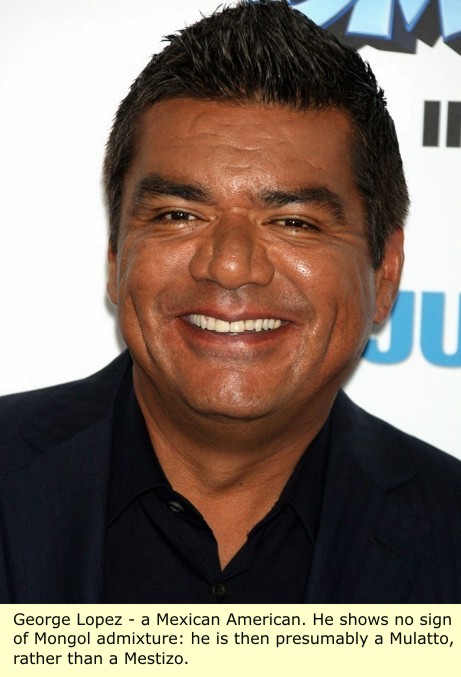 |
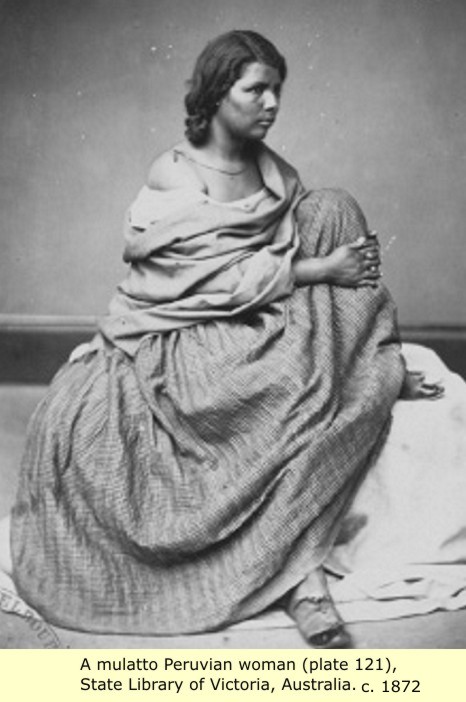 |
 |
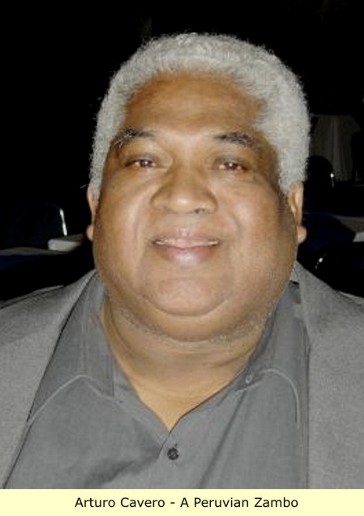 |
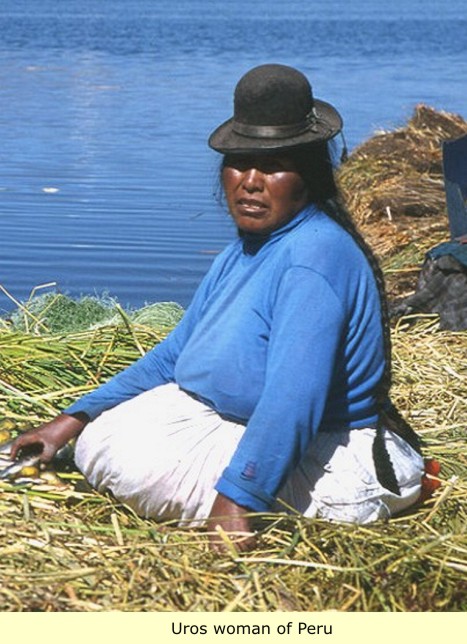 |
 |
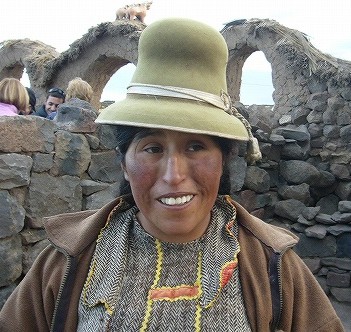 |
 |
 |
 |
 |
 |
by JOHN V. MURRA
INSTITUTE OF ANDEAN RESEARCH
IN THE EARLIEST DAYS OF THE EUROPEAN INVASION, when Inka resistance, potentially so threatening, turned out to be virtually absent (Lockhart 1972), the Pizarros acquired a steadfast ally, the Wanka/Cañaris lords. It was in their territory, Xauxa, that the Europeans established their first capital. Along with thousands of soldiers and bearers, the Canaris provided the newcomers with strategic information, plus the food and weapons stored in hundreds of warehouses built by the Inka and filled locally (Polo de Ondegardo 1940 [1561]). In one region where the Inka had managed to cobble together some resistance, as at Huánuco, the Europeans had to call on Canaris troops to help them put down “the rebellion.” All this assistance provided the Europeans was recorded with care on a khipu Kept by the Canaris lords. This record was first described by Cieza de León, some fifteen years after the invasion. Such bookkeeping later became the subject of litigation initiated at the viceregal court, at Lima, by one of the lords who in 1532 had opened the country to the troops of Charles V (Murra 1975). This man, don Francisco Cusichac, felt betrayed by the ill treatment of his people and the neglect of his own privileges.
The notion that his Canaris, and he along with them, were to be granted in encomienda to some European newcomer was shocking; Cusichac reasoned that if there were to be any encomenderos about, he Cusichac, was the most appropriate candidate (Espinoza Soriano 1972). By 1560 the Canaris had made many adjustments to European rule. The most notable was the intensive training of their sons in the new language and beliefs. Several of these bilingual young men, accompanied by their own, European-style notaries, traveled to Spain to petition at court for reward of past services from the emperor or his son (Espinoza Soriano 1972). Some of these “natural lords” were received by the monarch; some were granted coats of arms Spanish style. One of the petitioners requested that the crown grant him the right to sell and buy land, a privilege unknown in the Andes. By 1570, when the new viceroy, Francisco de Toledo, decided to conduct an inspection of the crown’s highland provinces, don Francisco Cusichac and his whole generation was dead. Their sons were now in charge, some of them very young men who some fifteen years earlier had met Charles V or his son, Philip, in Europe. The new viceroy called on all native authorities to display their European credentials and many did. Toledo ordered that the assembled parchments be burned. This was the beginning of a campaign against those lineages in the Andean elite that had collaborated with the invaders, an effort to destroy the European evidence of what the Spanish crown had once bestowed.
The only other group to be treated so harshly by Toledo were the descendants of another wing of the Andean elite who also sided from the earliest days with the invaders. These were the “sons” and heirs of Pawllu Thupa, the one Inka “prince” to make peace, early and openly, with the Europeans. Pawllu had helped them through extreme difficulties, particularly Almagro’s invasion of Chile. The efficiency of that thrust south was attributed by many to Pawllu Thupa’s ability to mobilize the lords of Charcas, the region known today as Bolivia. For his services, Pawllu had been allowed to keep “his Indians,” coca-leaf terraces, food-producing fields, and much other Inka wealth. A test came in 1550 at Pawllu’s death: various Europeans attempted to deprive the “Indian’s” heirs of these lands and people, but the emperor’s representative, Bishop LaGasca, resisted such claims. For the next two decades, Pawllu’s many sons were a distinguished and rich lineage in Cuzco. They spoke Spanish, invested in the long-distance coca-leaf trade to the mines at Potosí, and employed Europeans in their various enterprises. The main heir, don Carlos, was married to a European woman. Thirty-five years after the invasion, Pawllu Thupa’s heirs were the one group of Inkas at Cuzco who had managed to hang on to both status and wealth (Glave 1991).
When Toledo reached Cuzco on his way to the mines at Potosí, he selected Pawllu’s lineage for special attention. As at Xauxa, the lords were ordered to These grants are transcribed from the originals in the Archivo General de Indias, Seville: section Lima, legajo 567, lib. 8, fols. 107v–108r; see also other grants cited by Espinoza Soriano (1972). Letters from Francisco de Toledo to Philip II, found in the Biblioteca Nacional,Madrid. See Pawllu Thupa’s testament published in Revista del Archivo Histórico del Cuzco (1950: 275, 286).
Litigation over the Rights of “Natural Lords” display the credentials testifying to their services to the Spanish crown. The papers were publicly burned. Don Carlos and his kin were accused of maintaining illicit contacts with those Inka who had taken refuge at Vilcabamba, in the eastern lowlands (Kubler 1946). Some twenty of Pawllu Thupa’s heirs were put on trial for subversion; during the proceedings, which lasted many months, the princes were kept in animal corrals, exposed to the elements. The testimony was conducted in Quechua even though many of the accused spoke Spanish; a mestizo, one Gonzalo Gómez Ximénez, “interpreted” for the only record kept of the proceedings, despite Continuous protests by the accused. Ximénez’s version of what they had “confessed” became the official transcript. The “natural lords” were sentenced by Gabriel de Loarte to the loss of “their” Indians and of their coca-leaf fields, which were granted by Toledo to Loarte. Some twenty Inka, including aged princes, don Carlos, and several children, were deported on foot to Lima. From there they were supposed to be shipped into exile to Mexico.
Of the twenty, seven survived. They were able to rally support from some of the judges at the Audiencia who were hostile to the viceroy. Toledo remained in the highlands for almost another decade, the only viceroy to devote such personal attention to the Andean population. He sponsored many institutional innovations; some of them were consistent with ideas to end the Las Casas “benevolent” approach to Indian affairs, which he brought with him from court. He tried to put an end to the influence of Bishops Gerónimo de Loaysa of Lima and Domingo de Santo Tomás in Charcas, men from another era, who spoke Quechua and had earlier corresponded with Las Casas (Las Casas 1892).
Of the people Toledo consulted, the best informed were two Salamanca trained lawyers—Juan de Matienzo and Juan Polo de Ondegardo—who gave him diametrically opposed advice. Matienzo, a crown justice at the Audiencia of Charcas, was frequently active away from his court. Even before Toledo’s arrival in 1569, Matienzo had argued for the “extirpation” of the Inka lineage that had taken refuge in the forest at Vilcabamba. The high court in Lima was betting on a reduction policy, resulting in the conversion of the refugee princes and their resettlement at Cuzco. Matienzo thought such a policy was dangerous. Resettlement expanded the number of “natural lords”at Cuzco—a loss of revenues for the Spanish crown and the threat implicit in an additional focus of traditional loyalty (Matienzo 1967). After Toledo’s arrival, he and Matienzo formed an intimate alliance broken only by the judge’s death in 1579.
Most of this material comes from the Justicia legajo 465, a three-volume manuscript record of the litigation in Mexico, Archivo General de Indias, Seville. Some of it is quoted by Roberto Levillier (1921–26).
Matienzo had provided Toledo with a working understanding of the Andean system; it was Matienzo who designed the rotative mita system for recruiting the Andean labor force for the silver mines at Potosí, which was based on the Inka mit’a set up for the state cultivation of maize (Wachtel 1982). All efforts now were directed to improve the revenues of King Philip’s armies—be these active in Flanders or facing Constantinople by sea. Though trained at the same law school as Matienzo and proceeding from much the same social background, lawyer Polo de Ondegardo had a very different vision of the Andean world. One dimension of this perception was his much longer service in the region: he had arrived in 1540, some twenty years before Matienzo, at a time when Andean society was much closer to its aboriginal condition. He also never joined the court system, but held a variety of posts that brought him into daily contact with Andean realities: soldiering in the infantry, administering the newly discovered mines at Potosí, tracing the royal lineages at Cuzco, facing the dangers of lowland coca-leaf cultivation for highlanders, recognizing that ethnic groups resident at 3,800 m up in the Andes would also control people and fields at sea level. He noted the remarkable warehouse system continuously filled along the Inka highway; in pre-Toledo times he was frequently consulted by viceroys and settlers alike.
He had no ideological difficulty in recognizing that the descendants of King Thupa or of Wayna Qhapaq were, according to European rights, “natural lords.” While the two Salamanca alumni avoided head-on collisions, Polo did turn down the nomination by Toledo to repeat as governor of Cuzco. Unhappy with many of the decrees issued by the viceroy, Polo composed a book-length memorandum addressed to Toledo:“a report about the premises which lead to the notable harm which follows when not respecting the fundamental rights of the Indians . . .” (Polo de Ondegardo 1916 [1571]).
In it he also argued against the resettlement policy dictated by Matienzo and Toledo: when resettled into compact reducciones, the ethnic groups were impoverished since they lost access to their outliers located at many faraway resource bases. Even should one want to make Christians of them, argued Polo, it is best to proceed taking into account their own “order.” Further clarification of this transitional period in Andean history came through my recent, 1990–91, “discovery” in the Archive of the Indies in Sevilla of a large (3,000–plus pages) set of files recording in detail the minutes of the trial at Cuzco of the “natural lord” don Carlos Inca. While this source had been quoted in print as early as the 1920s by the Argentine scholar Roberto Levillier (1921–26, 7: 192–193), it had remained Litigation over the Rights of “Natural Lords” Underutilized by anthropologists. It greatly expands our understanding of Cuzco social structure a generation after the invasion. There is much detail about the Kangaroo court run by Toledo and his chief aide, Judge Gabriel de Loarte. The doctor “inherited” the estates and subjects of the defendants. The later career of the interpreter, Gonzalo Ximénez, is also noted:a few years later he was burned at the stake in Charcas, accused of the pecado nefando, the abominable sin of homosexuality. The Inka princes had raised the issue unsuccessfully through out their “trial.”
While awaiting his fate in the Charcas jail,Ximénez is said to have expressed a desire to confess his perjury and to apologize for the harm done to don Carlos. Ximénez is alleged to have recorded this wish in writing. This confession has not been located in the Audiencia of Charcas papers; Dr.Barros de San Millán, a judge at that royal court, is said to have expressed a lively, if suspect, interest in locating this document, without success.
Barros deserves the attention of anthropologists interested in Andean history.Trained at Salamanca, as were our two other lawyers, his American career spans close to thirty years, serving at the royal courts of Guatemala, Panamá, Charcas, and Quito. Our first notice of him in Andean scholarship reached us a few decades ago, when Waldemar Espinoza, a Peruvian colleague, published an Aviso, author unknown. It was a petition, signed by a dozen or so ethnic lords of Charcas (today Bolivia) (Espinoza Soriano 1969); addressed to the king, it seemed to be dated from a moment late in Toledo’s reign. In it the Andean lords trace their lineages four or five generations back, when the Inka were alleged to have granted their ancestors lavish textiles and wives from court: “We were the dukes and the marquesses of this realm.”
They offered to assume additional duties at the Potosí mines but did not care to be assigned only labor-recruiting duties. The argument that they were “natural lords” was now restated away from Cuzco and under new colonial circumstances. The author of the memorandum remained unidentified for decades. It was clear that he was familiar with both administrative procedures at the mines and with the ethnic map of the southern Andes; he plainly enjoyed the trust of the Aymara lords.The memorandum has recently been the object of detailed study by a Franco-British team preparing a documentary collection to honor don Gunnar Mendoza, director of the National Archive of Bolivia.
 |
| Click for Realhistoryww Home Page |